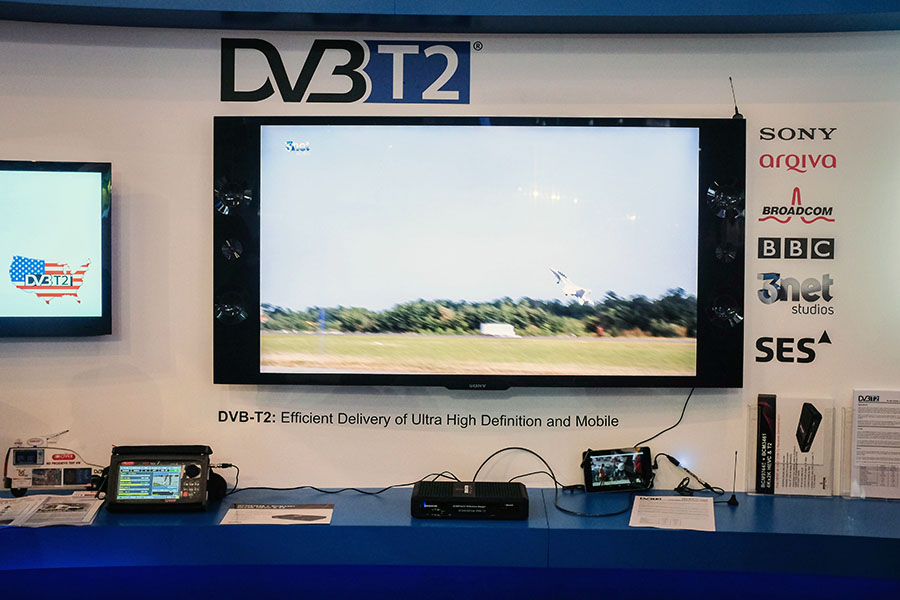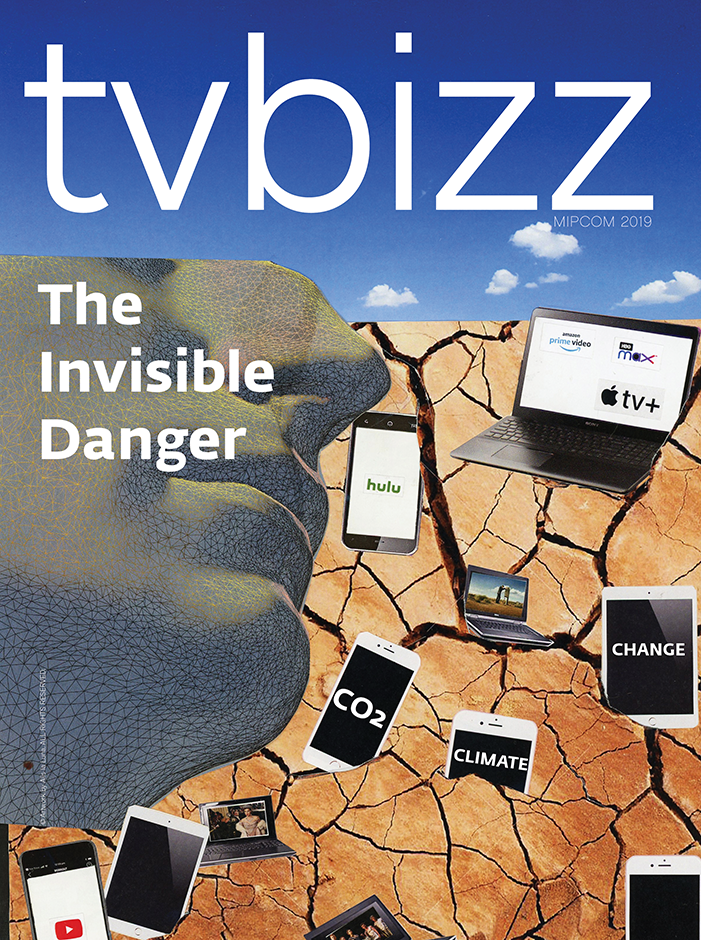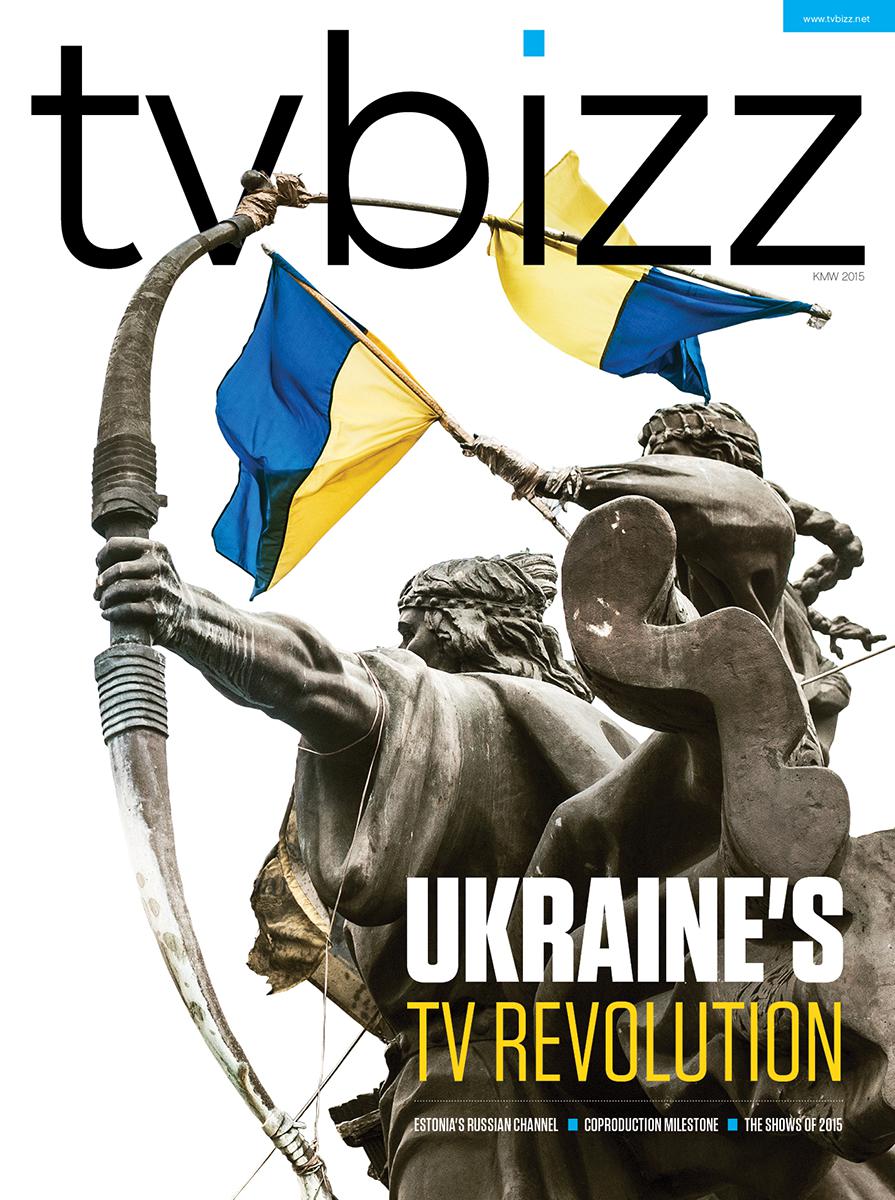What is the future of DTT in CEE

It has always been a hard task to predict which of the many technological novelties will rule our fast-changing world. Not long ago 3D TV was deemed “the next big thing” but just after a few years it turned out to be… dead. Earlier this year, the only two major TV makers still making 3D TVs, LG and Sony, announced they will drop support in 2017.
Now, the hype has moved to virtual reality (VR) as the newest technology that is supposed to define the way we watch television in the future. Yet even the biggest VR optimists admit that only around 20 million headsets have been sold, including fewer than 2 million of the “tethered” devices, which require a connection to a powerful computer. Nevertheless, Greenlight Insights predicts that by 2021 headset owners will spend $9bn a year on VR content, and TV producers and broadcasters are keen to start experimenting with the technology, offering new viewing experiences like the UEFA Champions League final in VR.
DVB-T is a technology that has been around for decades but its wide adoption in the CEE region took place in the past few years, because of the specifics of the different markets. The majority of CEE countries have already moved to digital terrestrial and switched off the analog broadcasts, with some exceptions like Ukraine, Bosnia and Herzegovina, Moldova, Albania, etc. In the case of Ukraine, the analog switch off will most likely take place in the next couple of years. Last month, the Head of the National Council on TV and Radio Broadcasting of Ukraine Yury Artemenko told Ukrinform that analog TV will not be switched off in 2017 or in 2018. He stated the reasons for the delay are incomplete infrastructure, non-transparent owner of Zeonbud, deficiency of set top boxes, insufficient coverage as well as resistance of some broadcasters to transfer to digital.
This "resistance" may turn out to be the biggest "enemy" of digital terrestrial broadcasting in countries that have already adopted the DVB-T/2 standard. It is definitely not the main choice of viewers in countries like Bulgaria, Romania and even Slovakia. The first two are known for having one of the highest percentages of pay TV penetration not only in Europe but also in the world. It is even difficult to provide official accurate data for the percentage of subscribers because of the notorious underreporting of actual numbers. According to a Kagan survey, Romania had the lowest DTT penetration rate in the region at just 9.9% of TV households in 2016, yet very high pay TV adoption at 92.4%.
One of the countries where the digitization process turned into a fiasco is Bulgaria. Since the end of 2016 Bulgarian National Television (BNT) has been airing the signal of its channels on the commercial multiplex of NURTS Digital, instead of using the specifically created for that purpose First Digital public multiplex. First Digital was created to retransmit the programs of BNT and, as in the case of NURTS, was connected to notorious banker Tsvetan Vassilev. It didn’t have any assets and provided the service using the assets of NURTS. The latter has stopped providing services to First Digital and this is the reason for the change.
Information about just how much BNT has been paying to NURTS and before that to First Digital has never been made public, but according to estimates the sum is around 15 million BGN per year (BNT’s entire budget for 2017 is 65 million BGN), two times more than what it paid when it aired analog signal - 8 million BGN tax to BTC. The retransmission tax should be now reduced since BNT is airing via a multiplex which is also used by other broadcasters, i.e. the fee will be reduced by 30-35%.
More alarming for the future of the DTT networks is the fact that commercial broadcasters have started leaving the multiplexes as it makes more business sense to drop their FTA status and charge operators for retransmitting their channels, instead of paying fees to remain in the free digital air. This is the case in Slovakia, for example, where CME stopped the distribution of its channels on DTT even at the expense of getting lower audience shares (later returning to DTT but in the pay TV package of Towercom). According to a recent survey by GfK, around 21% of Slovak households are watching channels offered by the DVB-T network. In Romania and Bulgaria, where CME has also left the Free TV air and started charging cable operators, this percentage is even lower. At the start of this year, CME also exited the DTT network in Slovenia. Back in June 2016, the company’s co-CEO Christoph Maiunsuch speaking at the New Europe Market in Dubrovnik said that free DTT is obsolete and uneconomic.
In Slovenia, Antenna Group’s Planet TV will follow in the steps of CME’s Pro Plus and leave the FTA market in July. The reason – Planet TV invests a lot in original production and wants to use the most-modern means of distribution which also offer catch-up TV; and of course, charge cable operators for the signal. It got a good business model from their competitors as in Q1 of this year, Pro Plus increased its revenues from subscriptions by half a million euros despite shutting down its terrestrial signal and the temporary loss of 235.000 viewers, according to Zurnal24 estimations. From Pro Plus did not respond, however, to the question of whether this was entirely due to the fact that operators were now paying a fee to re-broadcast their channels. In the upcoming quarters the results are expected improve significantly since the majority of operators reportedly started paying only in March.
There are other markets, however, like the Czech Republic and Poland, where the free digital terrestiral market is quite big, with lots of smaller and bigger players competing against each other. In the Czech Republic DVB-T is very popular, partly due to the low level of pay TV penetration. According to the DTT operator in the country Ceske Radiokomunikace, nearly 60% of the households use DVB-T. The latest development in the country, from last month, are the discussions about the new DVB-T2 standard which must be adopted by 2020, based on a decision by the EU, so some frequencies might be freed for mobile internet. There is an ongoing fight between satellite operators and Ceske Radiokomunikace. The former claim the adoption of the new standard will give preferential positions to terrestrial operators while the latter responds that not adopting the new standard may mean viewers migrating to pay TV services in order to have a wider channel choice. The changes in legislation are currently (as of late May) discussed in parliament.
In the small Baltic countries like Latvia and Estonia the need for DTT has also been questioned by the commercial TV players, while nearly half of the viewers in Lithuania are using the DTT services. In Russia, the DTT usage has also remained low, while the pay TV market continues to grow.
It seems the region is split as regards the perception of the need for digital terrestrial television. Government policies and spending service, which is also part of the national information space, play a key role in stimulating the population to take advantage of free digital broadcasts with excellent examples in this respect coming from the Czech Republic and Croatia. On the other hand, there are countries where the commercial players opt not only not to pay big money for DTT distribution but also to make some cash from pay TV distribution as their viewership remains unaffected. The question is what will happen if these broadcasters fail to negotiate acceptable terms with the pay TV operators? And what would happen if people no longer want to pay for these channels and start “cutting the cord”? There are certainly major risks hiding behind the FTA exit of the national commercial channels as viewer habits start to change while TV watching becomes a more expensive, yet less frequent habit. So, keeping free DTT alive might still be a good idea for the profit-driven TV companies in the long run.▪
Now, the hype has moved to virtual reality (VR) as the newest technology that is supposed to define the way we watch television in the future. Yet even the biggest VR optimists admit that only around 20 million headsets have been sold, including fewer than 2 million of the “tethered” devices, which require a connection to a powerful computer. Nevertheless, Greenlight Insights predicts that by 2021 headset owners will spend $9bn a year on VR content, and TV producers and broadcasters are keen to start experimenting with the technology, offering new viewing experiences like the UEFA Champions League final in VR.
DVB-T is a technology that has been around for decades but its wide adoption in the CEE region took place in the past few years, because of the specifics of the different markets. The majority of CEE countries have already moved to digital terrestrial and switched off the analog broadcasts, with some exceptions like Ukraine, Bosnia and Herzegovina, Moldova, Albania, etc. In the case of Ukraine, the analog switch off will most likely take place in the next couple of years. Last month, the Head of the National Council on TV and Radio Broadcasting of Ukraine Yury Artemenko told Ukrinform that analog TV will not be switched off in 2017 or in 2018. He stated the reasons for the delay are incomplete infrastructure, non-transparent owner of Zeonbud, deficiency of set top boxes, insufficient coverage as well as resistance of some broadcasters to transfer to digital.
This "resistance" may turn out to be the biggest "enemy" of digital terrestrial broadcasting in countries that have already adopted the DVB-T/2 standard. It is definitely not the main choice of viewers in countries like Bulgaria, Romania and even Slovakia. The first two are known for having one of the highest percentages of pay TV penetration not only in Europe but also in the world. It is even difficult to provide official accurate data for the percentage of subscribers because of the notorious underreporting of actual numbers. According to a Kagan survey, Romania had the lowest DTT penetration rate in the region at just 9.9% of TV households in 2016, yet very high pay TV adoption at 92.4%.
One of the countries where the digitization process turned into a fiasco is Bulgaria. Since the end of 2016 Bulgarian National Television (BNT) has been airing the signal of its channels on the commercial multiplex of NURTS Digital, instead of using the specifically created for that purpose First Digital public multiplex. First Digital was created to retransmit the programs of BNT and, as in the case of NURTS, was connected to notorious banker Tsvetan Vassilev. It didn’t have any assets and provided the service using the assets of NURTS. The latter has stopped providing services to First Digital and this is the reason for the change.
Information about just how much BNT has been paying to NURTS and before that to First Digital has never been made public, but according to estimates the sum is around 15 million BGN per year (BNT’s entire budget for 2017 is 65 million BGN), two times more than what it paid when it aired analog signal - 8 million BGN tax to BTC. The retransmission tax should be now reduced since BNT is airing via a multiplex which is also used by other broadcasters, i.e. the fee will be reduced by 30-35%.
More alarming for the future of the DTT networks is the fact that commercial broadcasters have started leaving the multiplexes as it makes more business sense to drop their FTA status and charge operators for retransmitting their channels, instead of paying fees to remain in the free digital air. This is the case in Slovakia, for example, where CME stopped the distribution of its channels on DTT even at the expense of getting lower audience shares (later returning to DTT but in the pay TV package of Towercom). According to a recent survey by GfK, around 21% of Slovak households are watching channels offered by the DVB-T network. In Romania and Bulgaria, where CME has also left the Free TV air and started charging cable operators, this percentage is even lower. At the start of this year, CME also exited the DTT network in Slovenia. Back in June 2016, the company’s co-CEO Christoph Maiunsuch speaking at the New Europe Market in Dubrovnik said that free DTT is obsolete and uneconomic.
In Slovenia, Antenna Group’s Planet TV will follow in the steps of CME’s Pro Plus and leave the FTA market in July. The reason – Planet TV invests a lot in original production and wants to use the most-modern means of distribution which also offer catch-up TV; and of course, charge cable operators for the signal. It got a good business model from their competitors as in Q1 of this year, Pro Plus increased its revenues from subscriptions by half a million euros despite shutting down its terrestrial signal and the temporary loss of 235.000 viewers, according to Zurnal24 estimations. From Pro Plus did not respond, however, to the question of whether this was entirely due to the fact that operators were now paying a fee to re-broadcast their channels. In the upcoming quarters the results are expected improve significantly since the majority of operators reportedly started paying only in March.
There are other markets, however, like the Czech Republic and Poland, where the free digital terrestiral market is quite big, with lots of smaller and bigger players competing against each other. In the Czech Republic DVB-T is very popular, partly due to the low level of pay TV penetration. According to the DTT operator in the country Ceske Radiokomunikace, nearly 60% of the households use DVB-T. The latest development in the country, from last month, are the discussions about the new DVB-T2 standard which must be adopted by 2020, based on a decision by the EU, so some frequencies might be freed for mobile internet. There is an ongoing fight between satellite operators and Ceske Radiokomunikace. The former claim the adoption of the new standard will give preferential positions to terrestrial operators while the latter responds that not adopting the new standard may mean viewers migrating to pay TV services in order to have a wider channel choice. The changes in legislation are currently (as of late May) discussed in parliament.
In the small Baltic countries like Latvia and Estonia the need for DTT has also been questioned by the commercial TV players, while nearly half of the viewers in Lithuania are using the DTT services. In Russia, the DTT usage has also remained low, while the pay TV market continues to grow.
It seems the region is split as regards the perception of the need for digital terrestrial television. Government policies and spending service, which is also part of the national information space, play a key role in stimulating the population to take advantage of free digital broadcasts with excellent examples in this respect coming from the Czech Republic and Croatia. On the other hand, there are countries where the commercial players opt not only not to pay big money for DTT distribution but also to make some cash from pay TV distribution as their viewership remains unaffected. The question is what will happen if these broadcasters fail to negotiate acceptable terms with the pay TV operators? And what would happen if people no longer want to pay for these channels and start “cutting the cord”? There are certainly major risks hiding behind the FTA exit of the national commercial channels as viewer habits start to change while TV watching becomes a more expensive, yet less frequent habit. So, keeping free DTT alive might still be a good idea for the profit-driven TV companies in the long run.▪




































